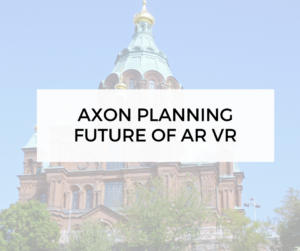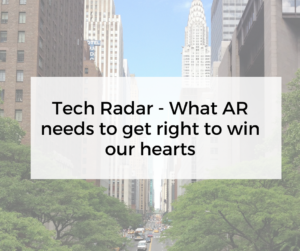Some key areas explored in this article are issues connected with AR and VR for enterprises as well as those providing AR for consumers. Topics that are on the agenda for enterprises that we are working with at The AREA. The summary below gives an overview of topics addressed in the article on TechRadar.
Content needs to keep you coming back for more
it’s not about creating content for a completely new category, but consistency. And getting people hooked in an ethical way is still key.
Samantha Kingston, Client Director at VR content and event planning agency Virtual Umbrella explained: “If you concentrate on the game side, I believe that we still are tackling the ‘normality’ of using AR as a medium. The ‘normality’ has come through things like snapchat and Pokemon go for the public so far.
“However for it to be used every day and consistently it’s down to creating content that really works with AR, not just because it’s a new and exciting medium.”
Privacy issues need to be addressed and regulated
Important discussions about ownership and data are already rife in the tech industry right now. But these conversations, and the regulations that come from them, need to be translated into AR as well.
Advertising and the battle of the brands
But for that to work there needs to be more transparency, lots of regulation and a big focus on quality content rather than making a quick buck. Although these may seem like concerns for the future rather than the present, it’s going to become increasingly important to have legislation in place sooner rather than later.
Considering real world safety
But unless we consider where responsibility lies, how to educate users and how to keep everyone safe, they’re problems that are likely to come up time and time again, leaving users injured and tech companies out of pocket.
Research conducted by The AREA last year looked at a range of security issues connected with wearables in the enterprise. More information can be found here.
More inclusive and thoughtful development
In a paper called A Value Sensitive Design Approach to Augmented Reality, researchers Batya Friedman and Peter H. Kahn from the Dept. of Psychology at the University of Washington explained: “At times, augmented reality attempts to create a system such that the user cannot tell the difference between the real world and the augmentation of it. Yet, when all is said and done, and the technology is turned off, many users will want to know what was ‘real’ and what was ‘augmented computation.’









